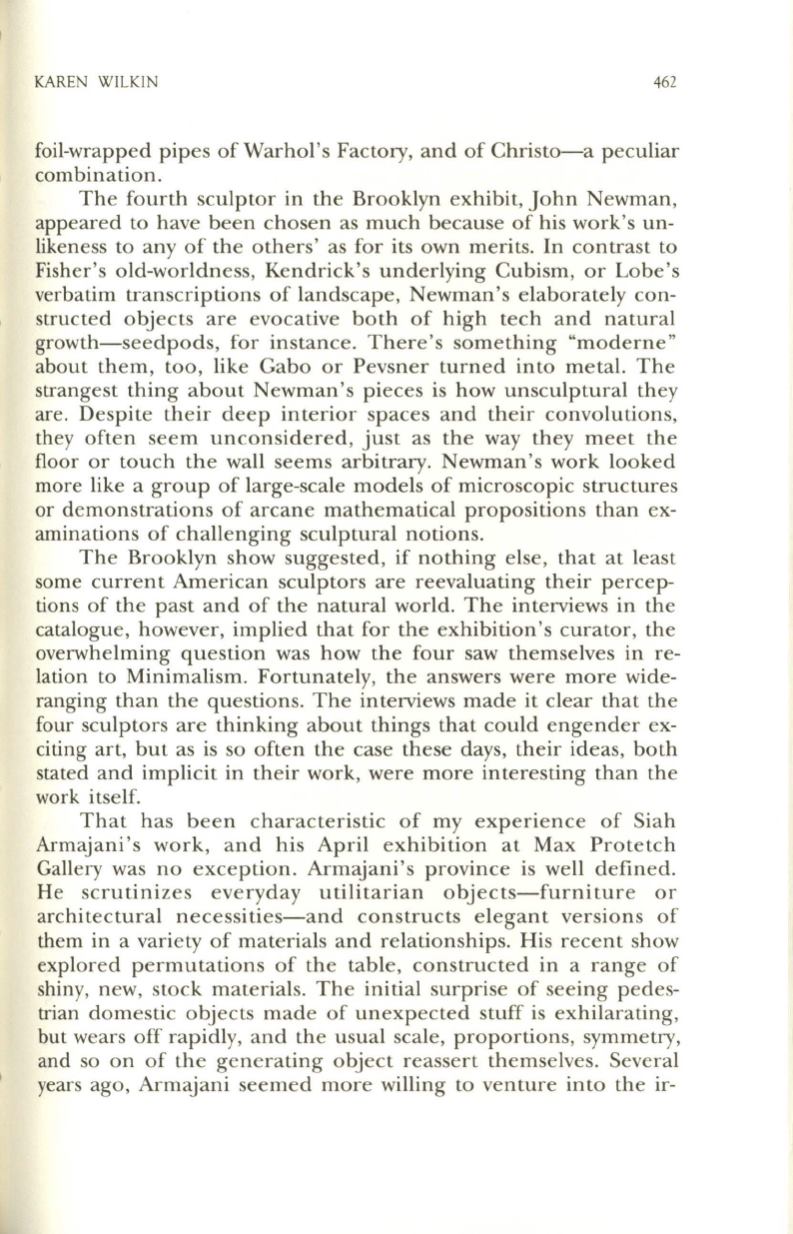
KAREN WILKIN
462
foil-wrapped pipes of Warhol's Factory, and of Christo-a peculiar
combination.
The fourth sculptor in the Brooklyn exhibit, John Newman,
appeared to have been chosen as much because of his work's un–
likeness to any of the others' as for its own merits. In contrast to
Fisher's old-worldness, Kendrick's underlying Cubism, or Lobe's
verbatim transcriptions of landscape, Newman's elaborately con–
structed objects are evocative both of high tech and natural
growth-seedpods, for instance. There's something "moderne"
about them, too, like Gabo or Pevsner turned into metal. The
strangest thing about Newman's pieces is how unsculptural they
are. Despite their deep interior spaces and their convolutions,
they often seem unconsidered, just as the way they meet the
floor or touch the wall seems arbitrary. Newman's work looked
more like a group of large-scale models of microscopic structures
or demonstrations of arcane mathematical propositions than ex–
aminations of challenging sculptural notions.
The Brooklyn show suggested, if nothing else, that at least
some current American sculptors are reevaluating their percep–
tions of the past and of the natural world. The interviews in the
catalogue, however, implied that for the exhibition's curator, the
overwhelming question was how the four saw themselves in re–
lation to Minimalism. Fortunately, the answers were more wide–
ranging than the questions. The interviews made it clear that the
four sculptors are thinking about things that could engender ex–
citing art, but as is so often the case these days, their ideas, both
stated and implicit in their work, were more interesting than the
work itself.
That has been characteristic of my experience of Siah
Armajani's work, and his April exhibition at Max Protetch
Gallery was no exception. Armajani's province is well defined.
He scrutinizes everyday utilitarian objects-furniture or
architectural necessities-and constructs elegant versions of
them in a variety of materials and relationships. His recent show
explored permutations of the table, constructed in a range of
shiny, new, stock materials. The initial surprise of seeing pedes–
trian domestic objects made of unexpected stuff is exhilarating,
but wears off rapidly, and the usual scale, proportions, symmetry,
and so on of the generating object reassert themselves. Several
years ago, Armajani seemed more willing to venture into the ir-


